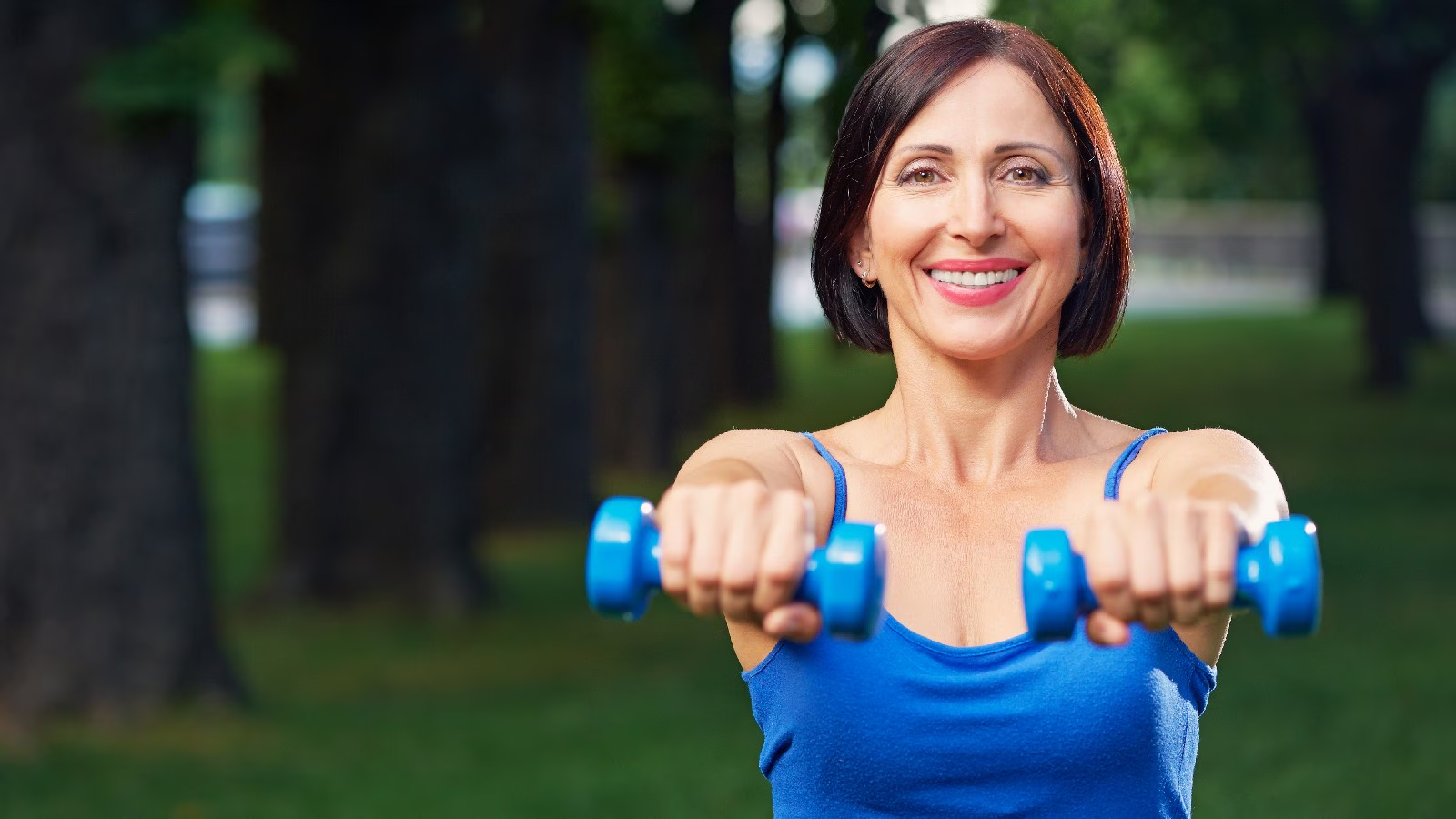As you age, maintaining physical health becomes more important than ever. Staying active after 50 can help improve strength, balance, flexibility, and overall well-being. The right exercises can prevent muscle loss, reduce the risk of falls, and improve heart health. Here are some key exercises to help you stay fit and strong in your 50s and beyond.

Strength Training
Strength training is crucial for maintaining muscle mass and bone density, which tend to decline with age. Exercises like squats, lunges, and resistance band exercises are great for building strength. Using dumbbells or resistance bands can help target different muscle groups. Aim to do strength training exercises at least two to three times a week.
Walking
Walking is one of the simplest yet most effective exercises for people over 50. It helps improve cardiovascular health, boosts endurance, and strengthens your legs. Whether it’s a brisk 30-minute walk around your neighborhood or on a treadmill, walking is an excellent low-impact exercise that can be easily incorporated into your daily routine.
Swimming
Swimming provides a full-body workout that is gentle on the joints, making it an ideal exercise for older adults. It helps improve cardiovascular endurance, flexibility, and muscle strength without putting stress on your knees, hips, or back. Try to swim for 20 to 30 minutes a few times a week for optimal results.
Yoga
Yoga improves flexibility, balance, and mental well-being. Poses like the downward dog, warrior, and tree pose help enhance flexibility and core strength. Yoga also helps with relaxation, reducing stress levels, and improving mental focus. Practicing yoga 2-3 times a week can help maintain mobility and balance as you age.
Pilates
Pilates is a low-impact exercise that focuses on core strength, stability, and flexibility. It is excellent for improving posture, balance, and overall strength. Pilates routines can be modified to suit different fitness levels and are particularly beneficial for strengthening the muscles around the spine and improving balance.
Balance Exercises
Balance tends to decline with age, increasing the risk of falls. Simple balance exercises, like standing on one leg or practicing heel-to-toe walking, can significantly improve your stability. Tai chi is also an excellent option for improving balance and coordination while providing a gentle workout for your body.
Stretching
Flexibility becomes more important as you age to maintain mobility and reduce stiffness. Incorporate stretching into your routine by doing basic stretches like hamstring stretches, shoulder stretches, and calf stretches. Stretching for 10-15 minutes a day can improve your range of motion and prevent injury.
Cycling
Cycling is another low-impact exercise that is easy on the joints while giving you a great cardiovascular workout. Whether on a stationary bike or outdoors, cycling strengthens your legs and improves heart health. A 20-30-minute ride a few times a week can greatly improve your endurance and muscle tone.
Resistance Band Workouts
Resistance bands provide a versatile, low-impact way to strengthen your muscles. They are particularly useful for exercises targeting the arms, chest, and legs. Exercises like seated rows, chest presses, and leg extensions can be done using resistance bands to improve overall muscle tone.
Core Exercises
A strong core is essential for good posture, and balance, and for reducing the risk of back pain. Simple core exercises like planks, bridges, and bird dogs strengthen your abdominal muscles and improve stability. Incorporate core exercises into your workout routine 2-3 times a week for optimal benefits.
Conclusion
Staying fit and strong after 50 is achievable with the right exercises. Strength training, walking, swimming, yoga, and balance exercises are key to maintaining muscle mass, improving flexibility, and enhancing cardiovascular health. By incorporating these exercises into your routine, you can continue to enjoy an active and healthy lifestyle well into your later years.




